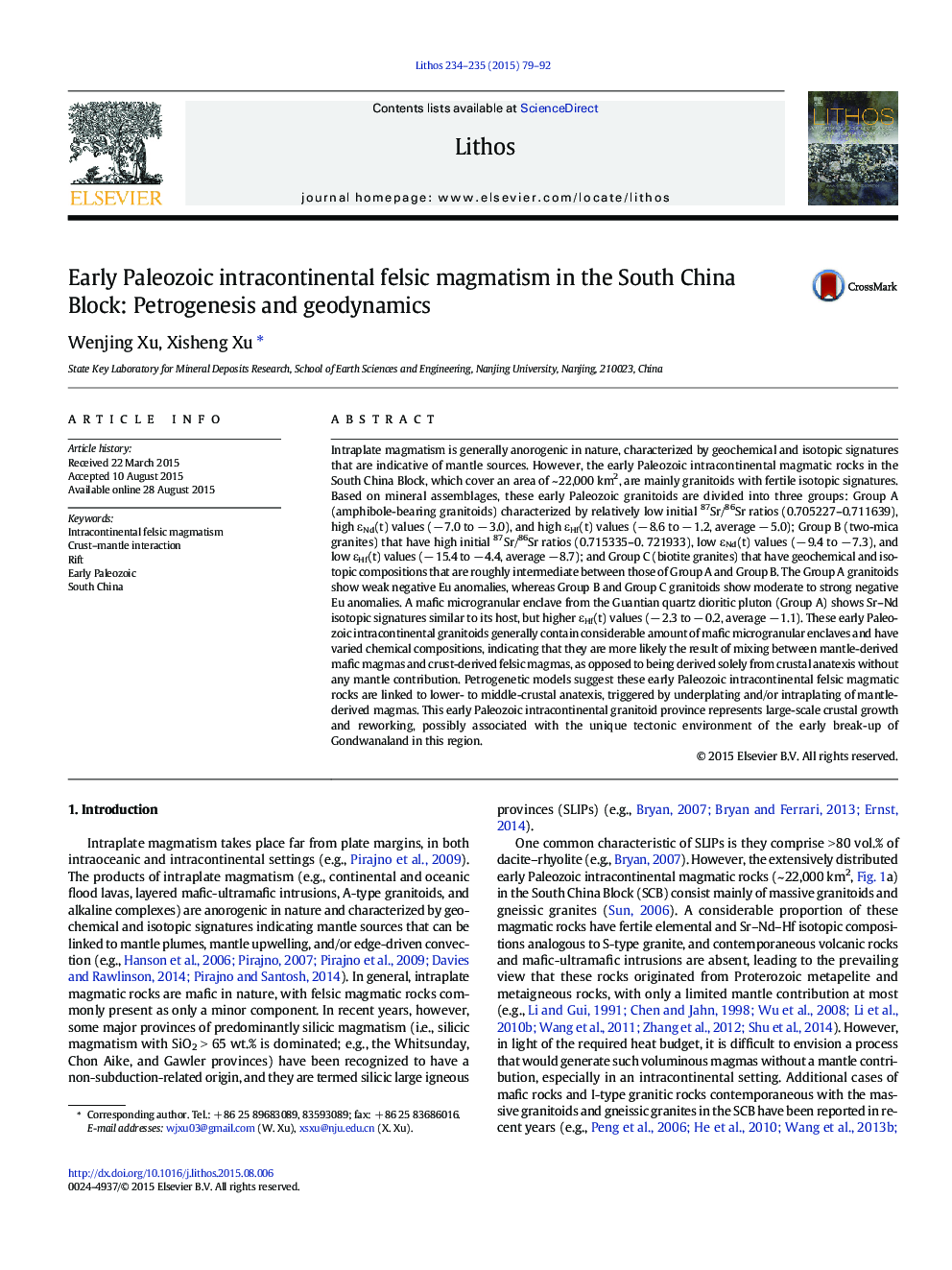| کد مقاله | کد نشریه | سال انتشار | مقاله انگلیسی | نسخه تمام متن |
|---|---|---|---|---|
| 4715623 | 1638657 | 2015 | 14 صفحه PDF | دانلود رایگان |
• Early Paleozoic granitoids in South China were formed in intracontinental setting.
• Crust–mantle interaction took place during the formation of early Palaeozoic granitoids.
• The formation of large amounts of silicic melt inhibit the further rise of mafic magmas.
Intraplate magmatism is generally anorogenic in nature, characterized by geochemical and isotopic signatures that are indicative of mantle sources. However, the early Paleozoic intracontinental magmatic rocks in the South China Block, which cover an area of ~ 22,000 km2, are mainly granitoids with fertile isotopic signatures. Based on mineral assemblages, these early Paleozoic granitoids are divided into three groups: Group A (amphibole-bearing granitoids) characterized by relatively low initial 87Sr/86Sr ratios (0.705227–0.711639), high εNd(t) values (− 7.0 to − 3.0), and high εHf(t) values (− 8.6 to − 1.2, average − 5.0); Group B (two-mica granites) that have high initial 87Sr/86Sr ratios (0.715335–0. 721933), low εNd(t) values (− 9.4 to − 7.3), and low εHf(t) values (− 15.4 to − 4.4, average − 8.7); and Group C (biotite granites) that have geochemical and isotopic compositions that are roughly intermediate between those of Group A and Group B. The Group A granitoids show weak negative Eu anomalies, whereas Group B and Group C granitoids show moderate to strong negative Eu anomalies. A mafic microgranular enclave from the Guantian quartz dioritic pluton (Group A) shows Sr–Nd isotopic signatures similar to its host, but higher εHf(t) values (− 2.3 to − 0.2, average − 1.1). These early Paleozoic intracontinental granitoids generally contain considerable amount of mafic microgranular enclaves and have varied chemical compositions, indicating that they are more likely the result of mixing between mantle-derived mafic magmas and crust-derived felsic magmas, as opposed to being derived solely from crustal anatexis without any mantle contribution. Petrogenetic models suggest these early Paleozoic intracontinental felsic magmatic rocks are linked to lower- to middle-crustal anatexis, triggered by underplating and/or intraplating of mantle-derived magmas. This early Paleozoic intracontinental granitoid province represents large-scale crustal growth and reworking, possibly associated with the unique tectonic environment of the early break-up of Gondwanaland in this region.
Journal: Lithos - Volumes 234–235, October 2015, Pages 79–92
